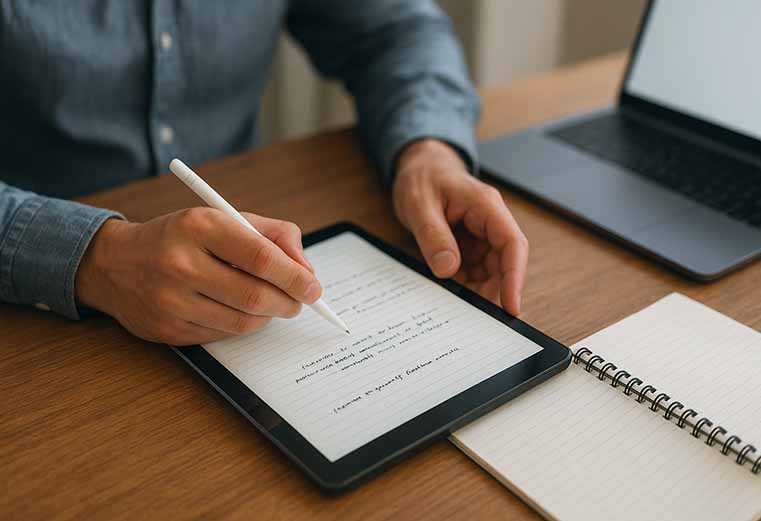
Note taking is more than just writing down what a teacher says. It is an active learning tool that helps students capture, organize, and retain knowledge. Studies show that students who take notes consistently remember lessons more effectively and perform better on tests. The act of listening, processing, and recording information at the same time strengthens memory pathways and makes ideas easier to recall. While typing notes is faster, handwritten notes tend to encourage deeper thinking because they force the brain to summarize instead of copying word for word.
Good note taking also reduces stress during exam season. Instead of reading through long chapters or trying to memorize entire presentations, students can rely on their personalized notes that highlight only the most important points. This makes studying more efficient and allows more time for review. For this reason, understanding different methods of note taking can be a game-changer for learners in high school, college, and even professional training programs.
Not every student learns the same way, and that is why several structured note taking techniques exist. Here are some of the most effective approaches:
The Cornell Method
This technique divides the page into three sections: a narrow left column for cues or keywords, a wide right column for notes, and a bottom section for summaries. The structure makes it easier to review by covering the note section and using the cues to recall key information. The summary at the bottom reinforces memory and creates a quick reference sheet before exams.
The Outline Method
Students who like organization benefit from outlining. Main topics are written as headings, followed by indented bullet points for supporting details. This hierarchical format works well for subjects like history or biology where ideas are connected and layered. Outlining is also useful when turning notes into essay outlines or presentations.
The Mapping Method
For visual learners, mind maps are powerful. This method starts with a central concept in the middle of the page and branches outward into related subtopics. Arrows, colors, and symbols help create associations between ideas. Mapping encourages creativity and works best for brainstorming sessions or complex concepts that are easier to understand when visualized.
The Charting Method
When comparing information, charts are effective. A table format allows students to line up dates, definitions, or processes side by side. For example, a history student might compare political events across countries in columns, making differences and similarities clearer at a glance.
Choosing the right method depends on the subject, the lecture style, and personal learning preferences. Students may even combine multiple techniques depending on the situation.

Technology has transformed the way students take notes. Laptops, tablets, and smartphones now offer apps that replicate traditional methods while adding features for easier organization. For example, applications allow color coding, audio recording, and search functions that save time during review. Cloud storage ensures that notes are always backed up and accessible across devices, reducing the risk of losing valuable material.
However, relying solely on digital typing can lead to passive learning, where students copy without processing. A balanced approach is to use digital tools for organization but still engage in summarizing or restructuring information. For instance, students may listen to recorded lectures and then create their own Cornell-style summaries afterward.
In online education platforms such as grade.labc.edu.mm digital note taking is especially helpful because students can keep track of lessons across multiple courses in one place. They can also collaborate by sharing notes with classmates, which encourages discussion and deeper understanding.
Even with the right method, note taking must be done effectively to maximize learning. Here are some proven strategies:
Listen actively before writing. Instead of copying every word, students should identify key points and write them down in their own words.
Use abbreviations and symbols. Shortened forms like “w/” for “with” or arrows for cause-and-effect save time and space while keeping notes clear.
Review notes within 24 hours. Revisiting notes shortly after class strengthens memory and fills in gaps before details are forgotten.
Highlight or color code wisely. Too much color becomes distracting. Using one or two highlight shades for critical terms or formulas makes notes easier to scan.
Leave space for future additions. Teachers often clarify points in later lessons, and having space allows students to update their notes without clutter.
Practice retrieval. Instead of only reading notes, students should cover sections and test themselves. This active recall technique reinforces memory better than rereading.
By applying these strategies consistently, students will not only prepare better for exams but also develop lifelong learning skills that carry into their careers.